Drone that can catch another by firing a net at it
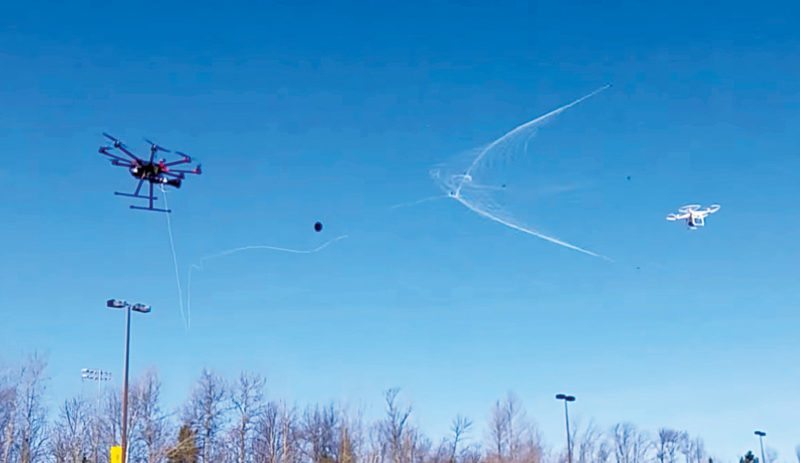
Engineers from Human-Interactive Robotics Lab (HIRoLab) at Michigan Technological University have filed a patent for a prototype for a drone-catching system that fires a net to take other unwanted aircraft down.
They have named the project Robotic Falconry and have said that the drone, equipped with a net shooter, can intercept and physically remove any intruding multi-rotor drone from private airspace. It can be autonomous or remote-controlled while tackling a drone.
According to the researchers, the net-shooting technique can be effective when force-landing unmanned intruders that would otherwise put the public at risk.
Drone that can do donuts, figure-eights around obstacles
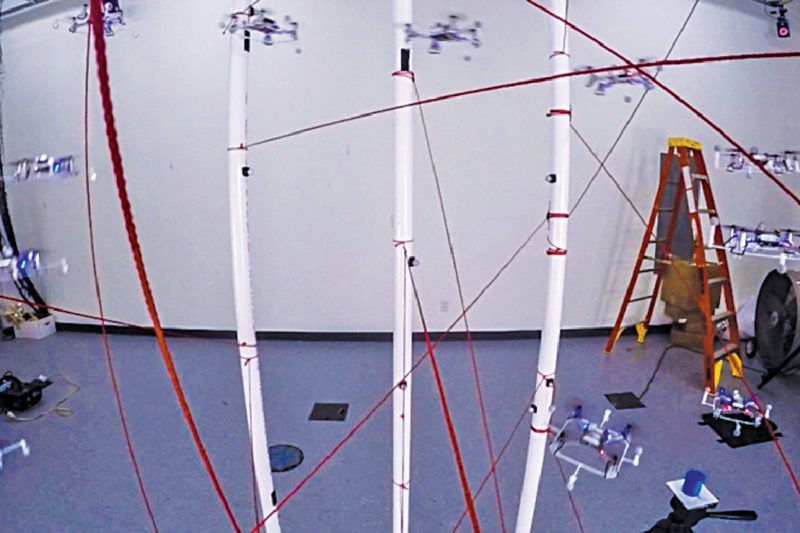
Getting drones to fly around without hitting things is a huge task. Obstacle-detection and motion-planning are two of computer science’s trickiest challenges, because of the complexity involved in creating real-time flight plans that avoid obstacles and handle surprises like wind and weather.
Two teams of researchers from MIT’s Computer Science and Artificial Intelligence Laboratory (CSAIL) have developed software that allows drones to stop on a dime to make hairpin movements over, under and around some 26 distinct obstacles in a simulated forest.
One team has shown a small quad-rotor doing donuts and figure-eights through an obstacle course of strings and PVC pipes.
In a second CSAIL project, PhD student Anirudha Majumdar showed off a fixed-wing plane that avoids obstacles without any advance knowledge of the space, and even in the face of wind gusts and other dynamics. The approach was to pre-program a library of dozens of distinct funnels that represent the worst-case behaviour of the system, calculated via a rigorous verification algorithm.
Polymer super suit designed using solar energy
The Grossman group of MIT has developed a transparent polymer that can store energy by using a solar cell and release controllable heat at any time. This newly-engineered material depends upon the Sun, which is a practically inexhaustible source of energy and stores energy in the form of chemical energy, releasing it later as heat.
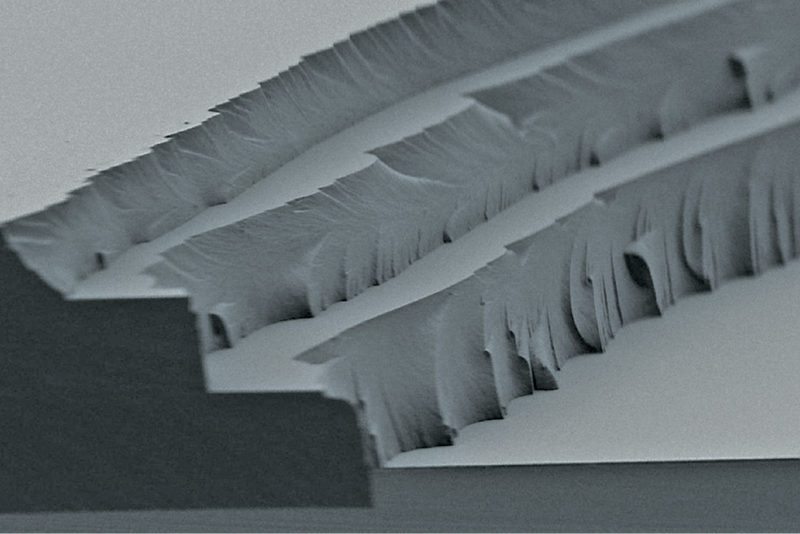
Jeffrey Grossman, lead researcher, has said that the product could be a boon for the clothing industry, and provide humans with a new type of protective wear. The team also explained that this concept first came to their mind while analysing the concept of harvesting solar energy for long-term usage, as required in various sectors.
Conventionally, solar energy is converted to electrical energy and serves as an environment-friendly renewable energy source, but the researchers wanted to come up with something new and innovative by using similar ideas.
Designer crystals for next-gen electronics
Liquid is often seen as the kryptonite of electronics, known for damaging and corroding components. This is why a new process that uses vapour instead of liquid to grow designer crystals could lead to a new breed of faster, more powerful electronic devices.
The method is invented by an international team of scientists from University of Leuven in Belgium, National University of Singapore and CSIRO. For the first time, researchers have shown how designer crystals known as metal organic frameworks can be grown using a vapour method that is similar to steam hovering over a pot of hot water.
The crystals are the world’s most porous materials, and if applied to microelectronic devices, could significantly boost their processing power.
Bandage to automatically deliver medicine to a wound
Researchers from MIT have developed a new type of bandage that incorporates electronics and drug reservoirs to monitor and care for a wound. The durable hydrogel bandage is supple and flexible, allowing for full range of movement even if it is applied to a knee or an elbow. It also has a few innovative features such as temperature-monitoring electronics that automatically release medicine to fight infections.
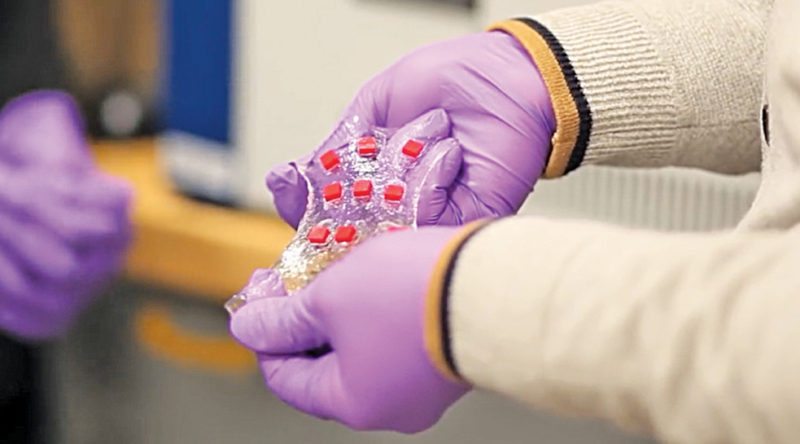
The smart wound dressing is made of a rubbery hydrogel matrix that is 90 per cent water, one designed specifically to replicate the qualities of human tissue. The gel creates a strong bond with materials such as titanium, aluminium, silicon, ceramic, gold and other substances that are commonly used to build electronics.
Titanium wire runs through the gel to make the bandage conductive, allowing a number of electronic devices to be embedded, such as semiconductor chips. LED lights are also used; these can flash when a wound reaches a certain temperature or drug reservoirs run low. Medicine reservoirs are drilled into the hydrogel and travel to the wound via channels cut in the matrix.
Wireless, dissolvable sensors to monitor brain
A team of neurosurgeons and engineers has developed wireless brain sensors that monitor pressure and temperature inside the brain and are then absorbed by the body, so that there is no need for surgery to remove the devices.
Developed by scientists at Washington University School of Medicine in St. Louis and engineers at University of Illinois at Urbana-Champaign, the implants can be used to monitor patients with traumatic brain injuries.
The devices are made mainly of polylactic-co-glycolic acid and silicone and can transmit accurate pressure and temperature readings as well as other information.
The researchers tested the sensors in baths of saline solution that caused these to dissolve after a few days. Next, they tested the devices in the brains of rats. Having seen that the sensors are accurate and dissolve in the solution and in the brains of rats, researchers now are planning to test the technology on humans.
Bio-inspired LEDs glow using proteins
A new type of hybrid light emitting diode (HLED) termed BioLED has been developed by a team of German-Spanish scientists. It features protein cascade coatings in the form of rubber to make the LEDs glow. Drawing inspiration from nature’s bio-molecules, the scientists developed this hybrid device that introduces luminescent proteins into a polymer matrix to produce luminescent rubber. It uses luminescent proteins to convert the blue light emitted by a regular LED into pure white light. The rubber is used to cover the LED to convert the light.
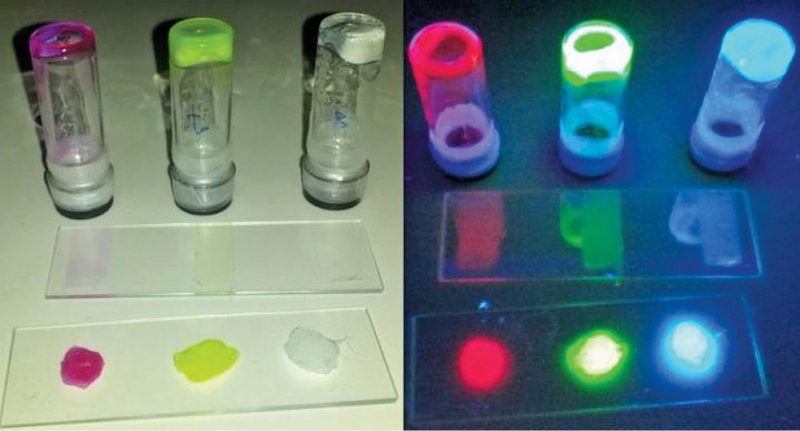
Manufacturing of LEDs involves inorganic components such as cerium and yttrium that are already in short supply and hence would not be sustainable for long. BioLEDs are easy to manufacture, are bio-degradable and can be efficiently recycled and replaced. These also come with less than ten per cent loss in luminous efficiency for over 100 hours.
Lithium-ion battery that automatically shuts down before over-heating
A research group comprising chemical engineers from Stanford University has developed a lithium-ion battery that automatically shuts down before over-heating, and starts charging once the temperature falls.
Zhenan Bao, team leader at CE research group at Stanford, and postdoctoral scholar Zheng Chen, turned to nanotechnology to look for a reversible and long-lasting solution. They developed a fast and reversible thermo-responsive polymer switching material that can be incorporated inside batteries to prevent thermal runaway. The material consists of conductive graphene-coated spiky nanostructure (nano-spiky) nickel particles as the conductive filler, along with a polymer matrix having a large thermal expansion coefficient. These nano-spikes have high electrical conductivity and high thermal sensitivity.
In order to conduct electricity, the nano-spikes must be in close vicinity. As temperature rises, the polythene stretches, causing the spikes to move apart from each other and thereby break electrical contact.
While experimenting, when the battery was heated up to 70°C, the polythene film quickly expanded like a balloon, shutting off the battery. But when the temperature dropped down to 70°C, the polyethylene shrunk, particles came in contact and the battery started regenerating electricity.
Disney’s robot can climb walls
Disney Research Zurich, along with ETH, an engineering, science, technology, mathematics and management university, has developed a robot that can climb walls.
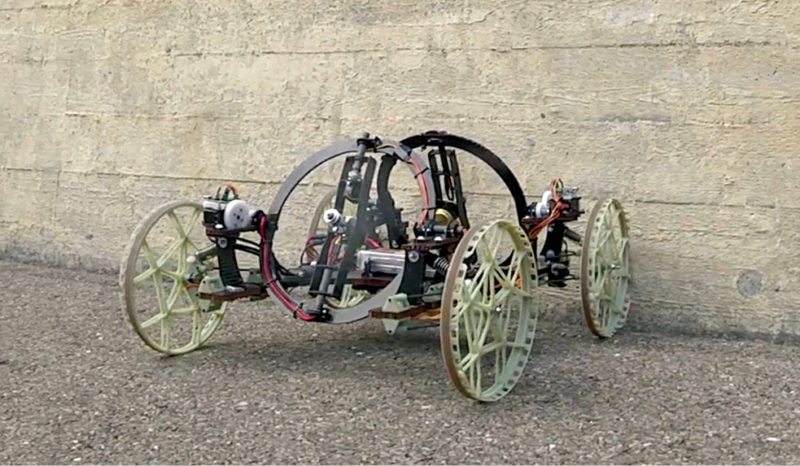
It is called VertiGo and is capable of making a near-seamless transition from the ground to a wall. It is also capable of mind-boggling wall-riding owing to a pair of tiltable propellers that provide thrust onto the wall, effectively sucking it against the vertical surface.
With two steerable wheels, VertiGo can be operated as a radio-controlled car. But, unlike the radio-controlled car, VertiGo has two infrared distance sensors mounted on the front to estimate its orientation in space.
The robot has potential use in entertainment, such as providing visual effects, but is also a general technology for locomotion on walls with possible other uses such as industrial inspection.








